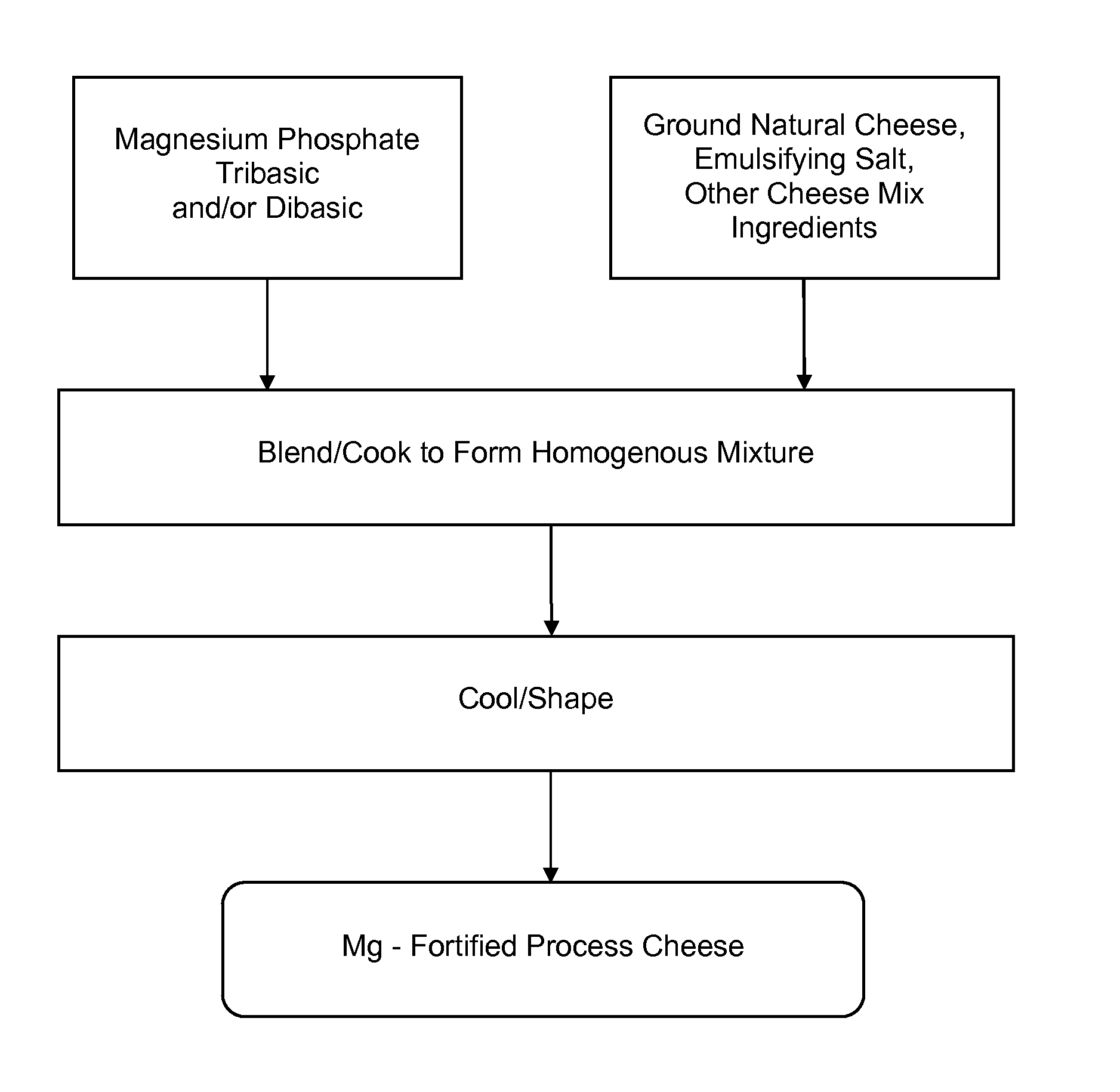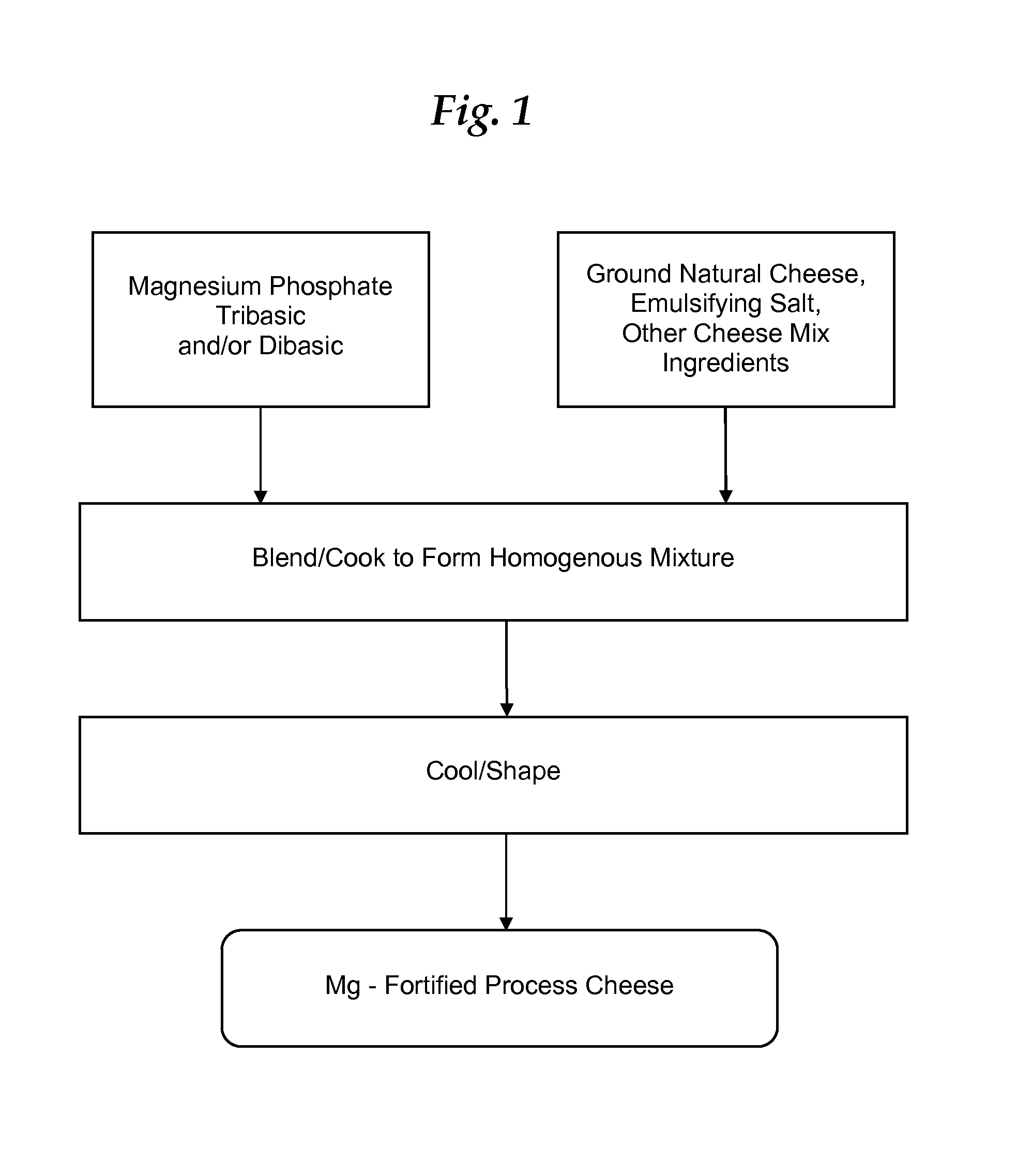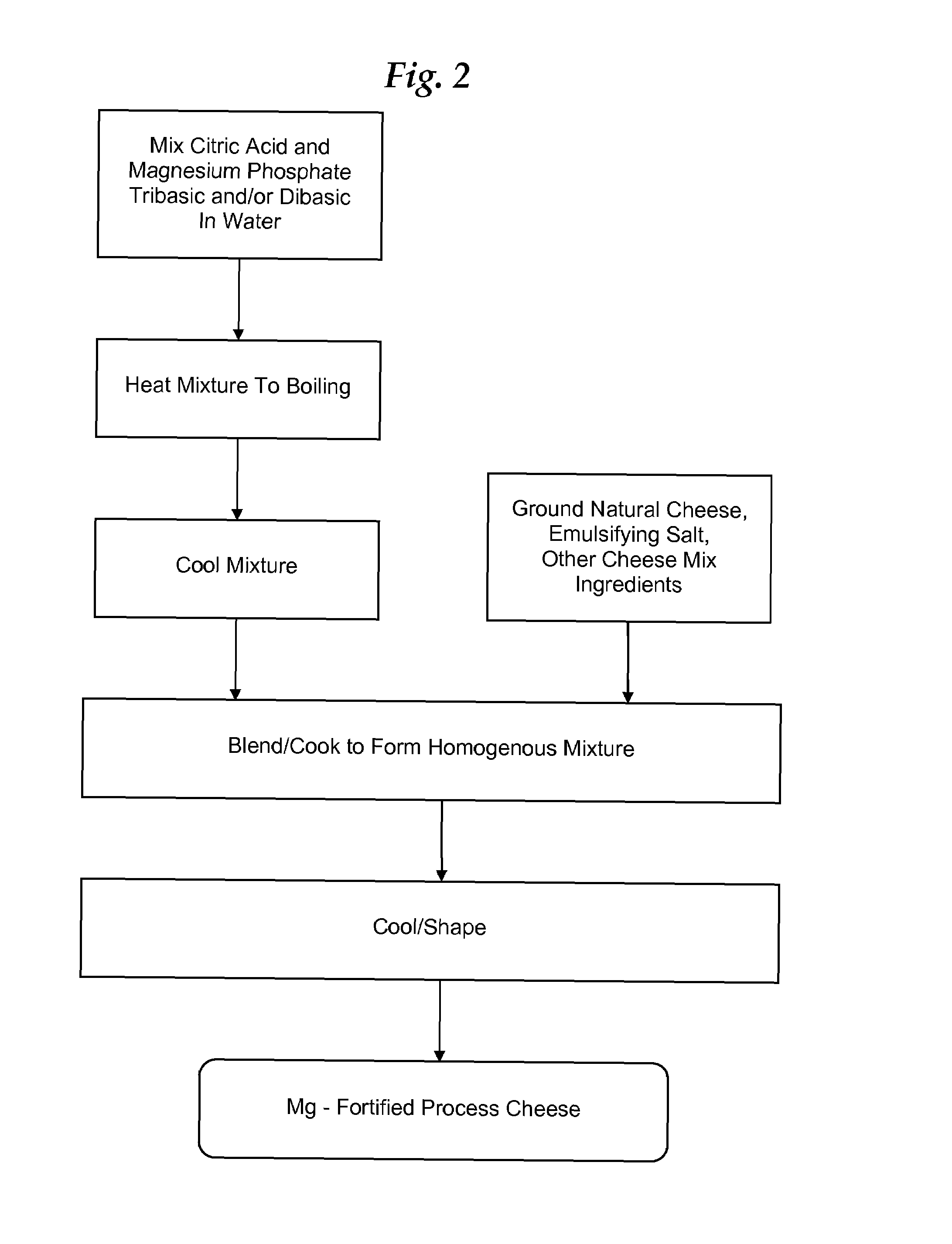Methods of fortifying process cheese and products thereof
a technology of process cheese and fortification method, which is applied in the field of fortification process cheese, can solve the problems of affecting the quality of functional or product products, texture change and processing, and disrupting the ionic balance, so as to achieve the desired texture, flavor and other organoleptic properties, and the effect of ensuring the quality of the produ
- Summary
- Abstract
- Description
- Claims
- Application Information
AI Technical Summary
Benefits of technology
Problems solved by technology
Method used
Image
Examples
example 1
[0053]Processed cheese products were prepared in a pilot plant using different forms of magnesium. A control product was prepared without a magnesium source but otherwise was made in a similar manner. The basic cheese mix formulation used in making these products was as follows: 47.5% ground Cheddar cheese, 2.3% dairy fat, 18.95% whey and milk protein, 26.13% water, 1.7% nutrients, 2.2% emulsifiers, 1% salt, 0.18% preservatives, and 0.04% color. The forms of magnesium tested included: magnesium hydroxide, magnesium carbonate, magnesium lactate, magnesium glycerophosphate, magnesium sulfate, magnesium citrate, magnesium chloride, magnesium phytate, magnesium gluconate, magnesium ascorbate, magnesium aspartate, magnesium oxide, and magnesium phosphate. The magnesium phosphate was tribasic and dibasic. The sample of processed cheese fortified using magnesium phosphate was representative of the present invention, while samples fortified with the other magnesium sources were comparison s...
example 2
[0056]A low-fat processed cheese product was prepared with magnesium phosphate tribasic added in an amount sufficient to deliver 10% DV (40 mg) Mg per serving, and a control was separately prepared without the magnesium salt but otherwise in a similar manner. The product was prepared in the pilot plant by the same method as in Example 1. The basic cheese mix formulation used in making these products was as follows: 51% ground reduced-fat natural cheddar cheese 27% water, 12% whey and milk protein 3.5% flavors, 2.6% emulsifiers, 1.5% nutrients other than magnesium phosphate, 1% salt, 1% stabilizers, 0.15% preservatives, and 0.05% color. Based on evaluation by a panel of process cheese experts, the magnesium phosphate fortified process cheese product had no noticeable differences from the control in terms of flavor, texture and firmness.
example 3
[0057]Starting with the same inventive cheese formula and process as described in Example 1 with magnesium phosphate tribasic added in an amount sufficient to deliver 10% DV (40 mg) Mg per serving, vitamin A (in the form of palmitate and carotene), thiamin, vitamin B12, riboflavin, vitamin B6, vitamin E, and vitamin K were additionally added at a level to deliver 10% DV for each nutrient per serving. 4 grams of protein was also provided per serving. The vitamins were analyzed to ensure their presence in the product after processing. Based on evaluation by a panel of process cheese experts, the product was tasted and no noticeable changes were noted as compared to an unfortified product (control) which omitted the nutrients but otherwise was made in a similar manner. Thus it is expected that fortification with any of the tested vitamins could be achieved alone or in any combination thereof.
PUM
 Login to View More
Login to View More Abstract
Description
Claims
Application Information
 Login to View More
Login to View More - R&D
- Intellectual Property
- Life Sciences
- Materials
- Tech Scout
- Unparalleled Data Quality
- Higher Quality Content
- 60% Fewer Hallucinations
Browse by: Latest US Patents, China's latest patents, Technical Efficacy Thesaurus, Application Domain, Technology Topic, Popular Technical Reports.
© 2025 PatSnap. All rights reserved.Legal|Privacy policy|Modern Slavery Act Transparency Statement|Sitemap|About US| Contact US: help@patsnap.com



